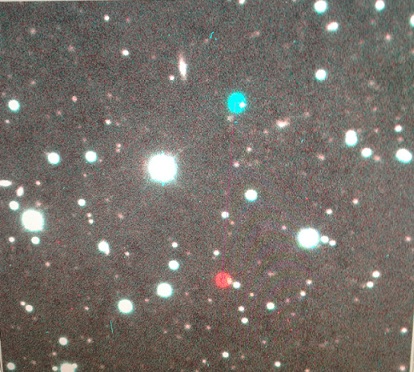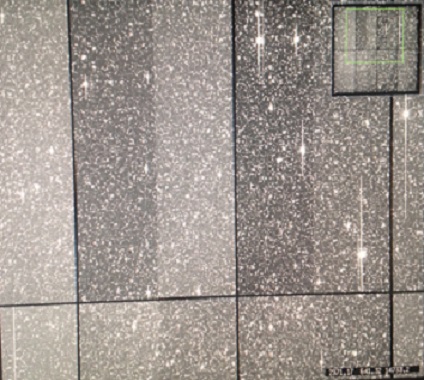Due to bad weather conditions, we could not open the dome last night to observe anything. However, we were able to sift through the data we had collected the night before last and were able to identify possible TNOs.
Below is a raw picture of the data collected. Every bright spot in the image is a star and we had taken about one hundred exposures (Which all looked like the picture below), in order to analyze them and identify Kuiper belt objects!
After taking the images, some of which required over 10 minutes of exposure time, we had to locate the objects moving in each frame. 
In order to locate these objects we received pictures that looked like the one above, containing bright “white spots” of stars. The image above was obtained by taking multiple images in different color schemes and placing them over one another. In doing so, a moving object will appear to be red in one image and blue in another, indicating it had moved. The red/cyan spots in the image above are not Kuiper belt objects, it is most likely a main belt asteroid or an asteroid that is in close proximity to the Earth (Due to its large size and the distance it has moved). Real Kuiper belt objects would be much smaller and the red/cyan spots would be much closer together. The distance between the red/cyan pair above is about 30arc seconds per hour, a real Kuiper belt object would be less than 3arc seconds per hour.
Below are a few images of galaxies that we were able to see! (You may also be able to identify red and cyan spots which are asteroids or possible Kuiper belt objects).


-Shelby & Lake

